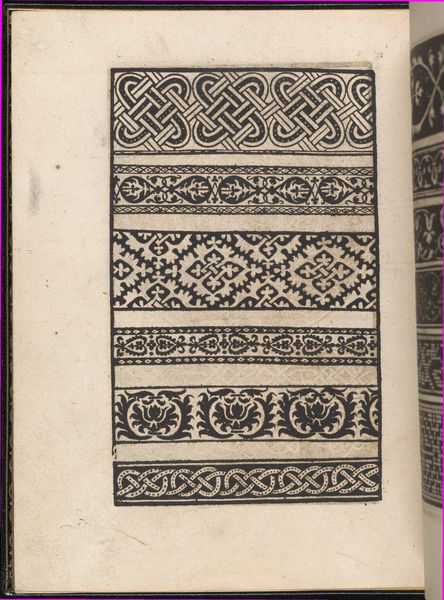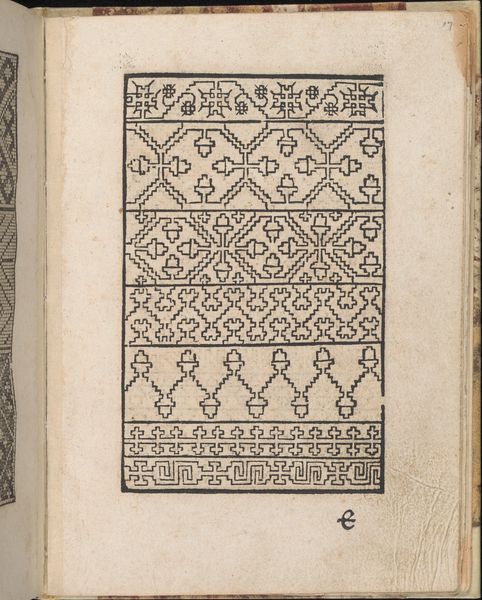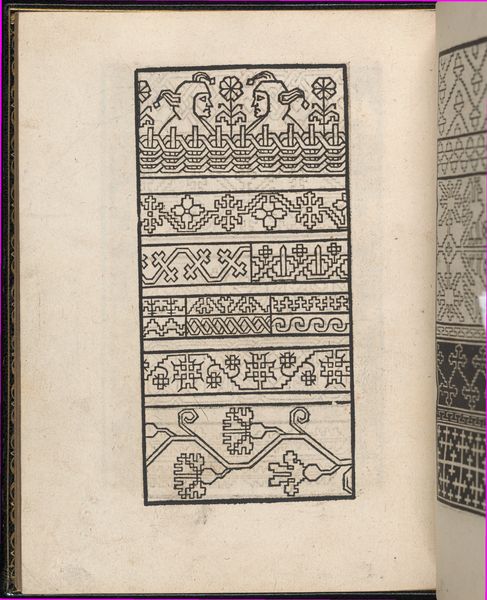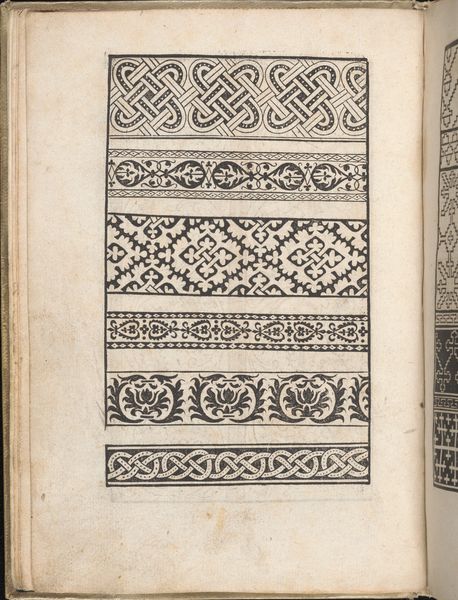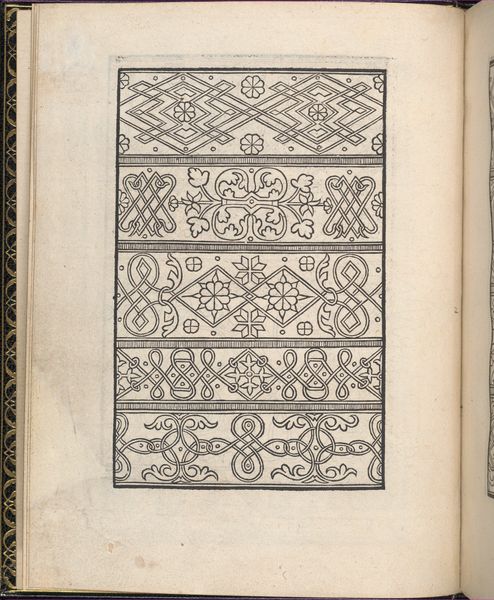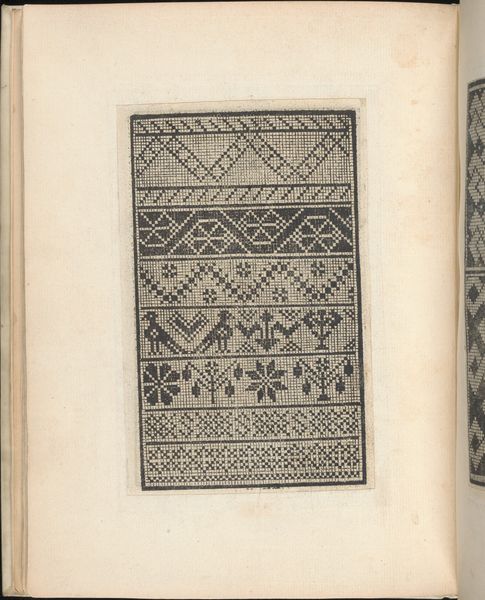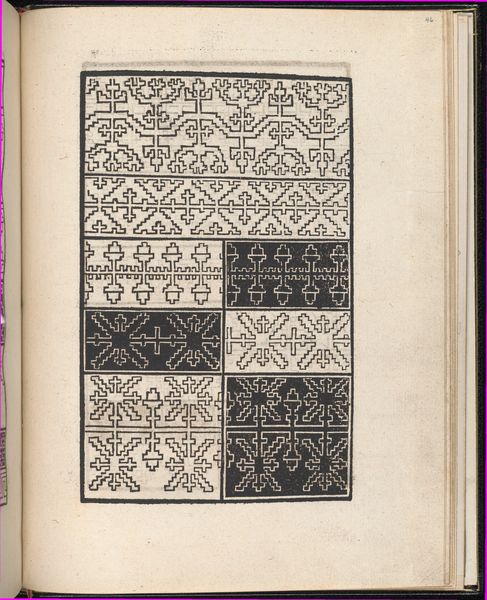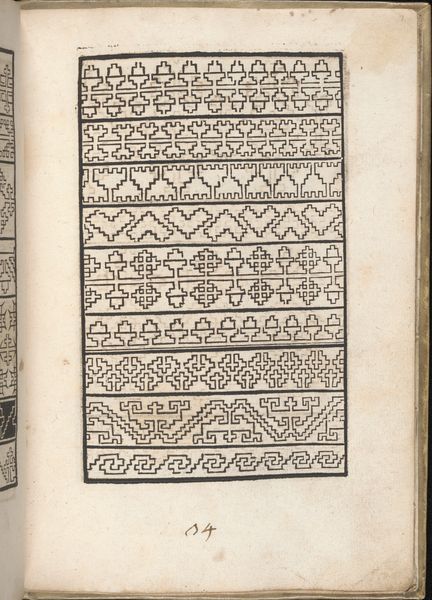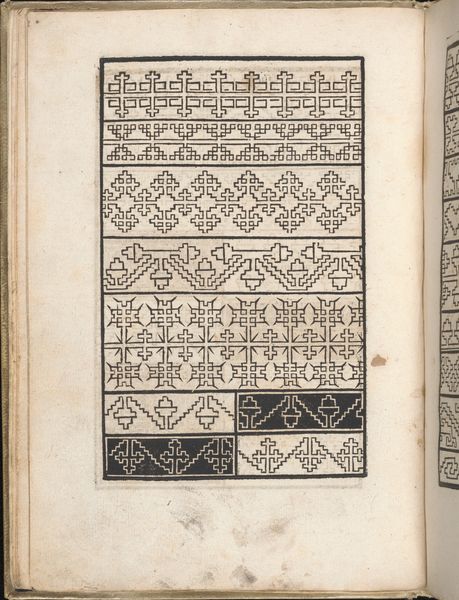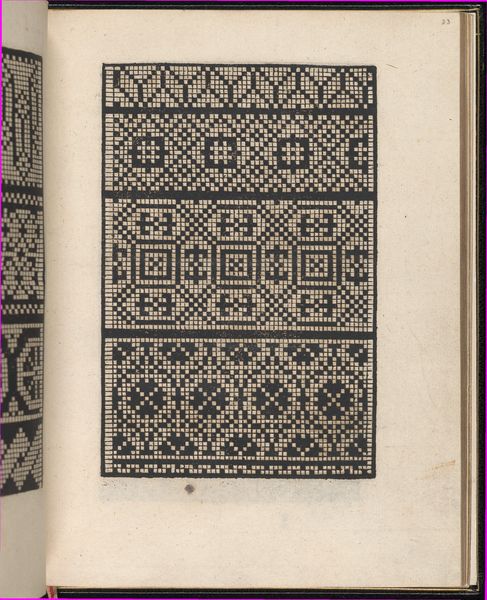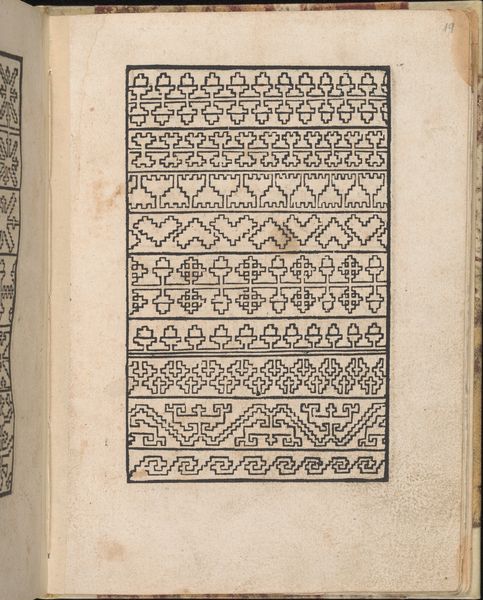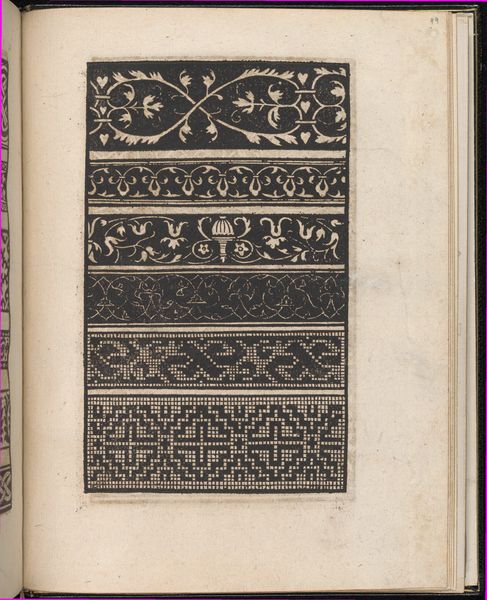
Page from Ein new kunstlich Modelbuch...(Page 44r) 1544
0:00
0:00
drawing, graphic-art, ornament, print, woodcut
#
drawing
#
graphic-art
#
ornament
#
medieval
# print
#
form
#
geometric
#
woodcut
#
line
#
northern-renaissance
#
decorative-art
Dimensions: Overall: 7 11/16 x 5 7/8 in. (19.5 x 15 cm)
Copyright: Public Domain
Curator: Here we have a page, specifically page 44r, from Peter Quentel’s "Ein new kunstlich Modelbuch...", created in 1544. The print employs woodcut techniques and falls under the category of graphic art. Editor: Immediately striking is its dense linearity, like woven threads rendered starkly in black and white. There is something almost architectural about its organization into neat horizontal registers of ornament. Curator: It's intriguing to consider these patterns not merely as surface decoration, but as visual expressions deeply interwoven with the social and political contexts of the Northern Renaissance. This book, being a "model book," suggests a society deeply concerned with reproducible designs and their function in establishing specific gender and class identities. Editor: Precisely, we should attend to the practical and the productive nature of such pattern books. It wasn’t just about aesthetics; this print served as a functional template. It dictates the parameters for skilled artisans reproducing these patterns and exporting or implementing the look into woven fabric or in some other handwork. Curator: Exactly, what about its relationship with the women of the era? Model books helped to elevate what was formerly thought of as ‘woman’s work,’ such as embroidery and lacework, thus changing the very idea of domesticity at the time. Editor: It's about valuing the manual skill inherent in these traditional forms, right? In a period of emerging capitalist modes of production, such works illustrate the tensions between handicraft and early manufacturing processes. The tension between old ways and new ways of using labor. Curator: And look how it embodies both medieval geometric forms but also an emergent sense of the linear, that clean line reflecting burgeoning print technologies that redefined aesthetics as well as information dissemination. It’s also vital to remember how craft and decorative art can empower those marginalized by the traditionally male-dominated fields. Editor: Absolutely, and examining the consumption of these model books reminds us that aesthetic appreciation wasn't some detached intellectual pursuit; it was an embedded practice within complex material networks. Its influence is really powerful! Curator: These insights from the Metropolitan Museum of Art's collection enrich the study of art by illuminating how material processes contribute meaningfully to social constructions. Editor: Indeed. When we focus on the how of things—how they're made, traded, and used—we reveal compelling narratives about artistic creation's intersection with broader structures of economy and experience.
Comments
No comments
Be the first to comment and join the conversation on the ultimate creative platform.
